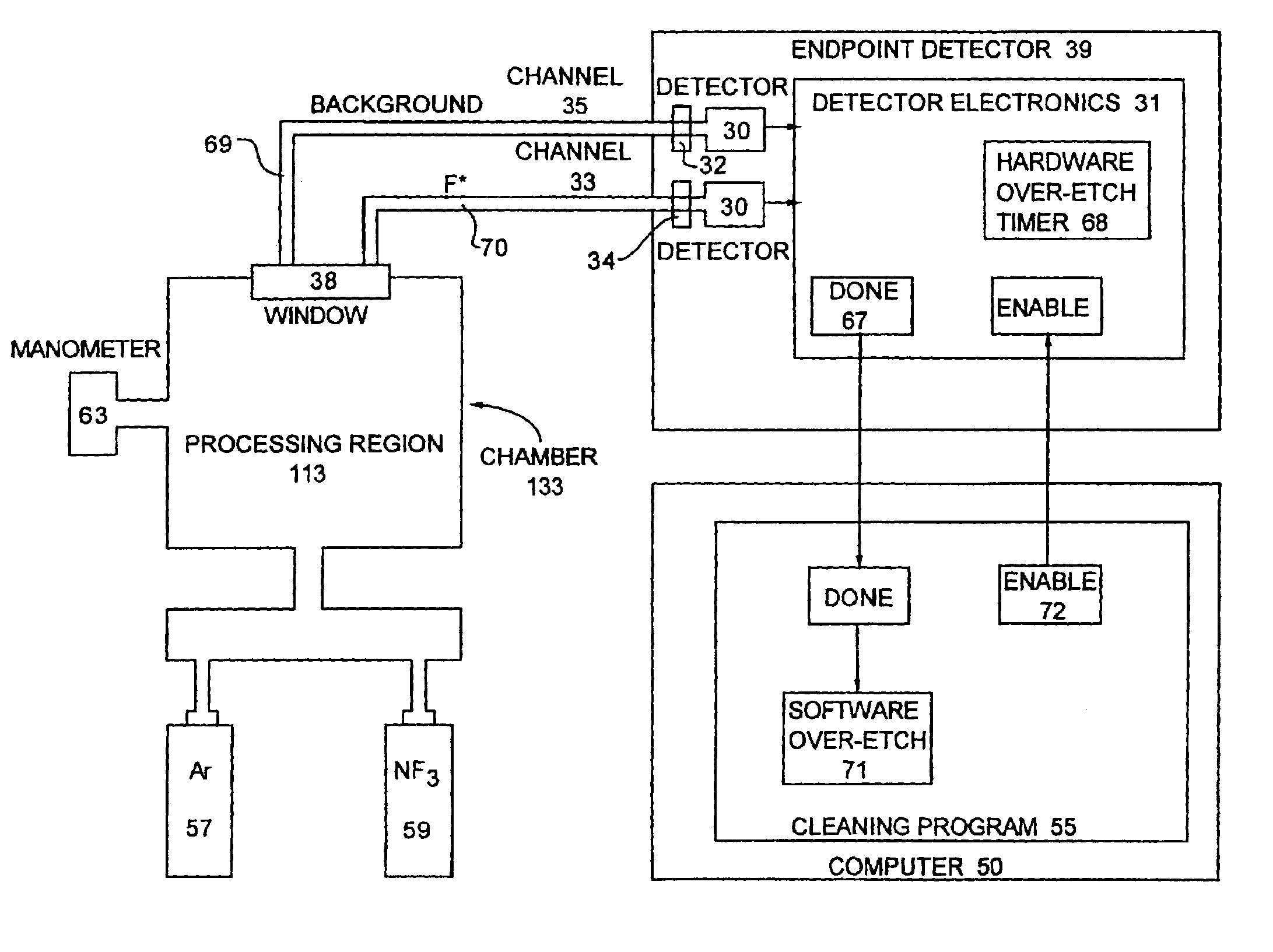Detecting the endpoint of a chamber cleaning
- Summary
- Abstract
- Description
- Claims
- Application Information
AI Technical Summary
Benefits of technology
Problems solved by technology
Method used
Image
Examples
Embodiment Construction
[0027]U.S. Pat. No. 5,366,585, issued Nov. 22, 1994 to Robertson et al., entitled “Method and Apparatus for Protection of Conductive Surfaces in a Plasma Processing Reactor”, assigned to the assignee of the present invention, and incorporated herein by reference, discloses a PECVD chamber with which the present invention may be used. Of course, the invention is applicable to numerous other types of CVD devices as well as devices for other deposition methods.
[0028]As shown in FIG. 1, a PECVD apparatus 130 includes a susceptor 135 having a stem 137. Susceptor 135 is centered within a vacuum deposition process chamber 133. Susceptor 135 holds a substrate such as a glass panel (not shown) in a substrate processing or reaction region 141. A lift mechanism (not shown) is provided to raise and lower the susceptor 135. Commands to the lift mechanism are provided by a controller. Substrates are transferred into and out of chamber 133 through an opening 142 in a sidewall 134 of the chamber 13...
PUM
| Property | Measurement | Unit |
|---|---|---|
| Ratio | aaaaa | aaaaa |
| Wavelength | aaaaa | aaaaa |
| Threshold limit | aaaaa | aaaaa |
Abstract
Description
Claims
Application Information
 Login to View More
Login to View More - Generate Ideas
- Intellectual Property
- Life Sciences
- Materials
- Tech Scout
- Unparalleled Data Quality
- Higher Quality Content
- 60% Fewer Hallucinations
Browse by: Latest US Patents, China's latest patents, Technical Efficacy Thesaurus, Application Domain, Technology Topic, Popular Technical Reports.
© 2025 PatSnap. All rights reserved.Legal|Privacy policy|Modern Slavery Act Transparency Statement|Sitemap|About US| Contact US: help@patsnap.com



